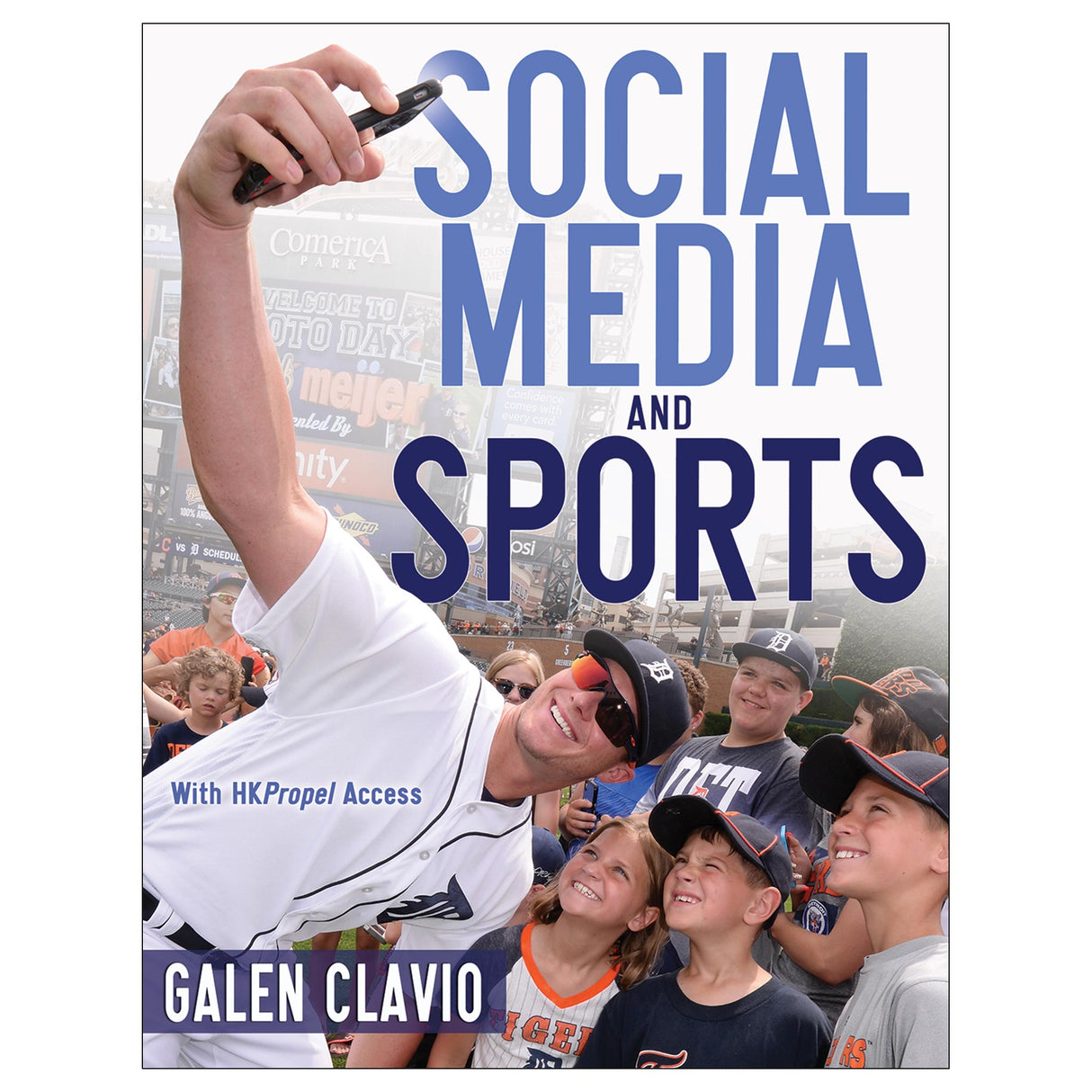Social Media and Sports With HKPropel Access
Author: Galen Clavio
$86.00 USD
Beginning with foundational concepts, students will first examine the history of social media and its impact on sports. They will learn about the categories of content used, including written content, images, produced video, live video, audio, graphics, dynamic visuals, and responses. They will then gain a better understanding of the social media environment by learning how to think about audiences and networks, evaluating how online communities act and interact, and considering key issues that may be encountered. The final chapters of the text assemble the building blocks from previous chapters into practical application, covering brand management strategies and overall social media presence from the perspective of a member of the sports media, a representative of a team or league, or an individual athlete.
Related online learning aids, delivered via HKPropel and reviewed annually to stay current with evolving trends, provides a detailed look into major social networks and their technological elements, plus best practices, tips, and tricks for utilizing a variety of social media platforms. It also examines content methodologies, including podcasting, live video, and prerecorded video, and it discusses the use of social management software. Markers throughout the text refer students to the web resource when additional related content is available.
Learning aids for students include Professional Insights, sidebars containing interviews with industry insiders; these real-world examples and professional advice provide depth and context to each chapter’s content. Key Points highlight important points, end-of-chapter review questions promote practical application and ensure content comprehension, and bolded key terms are defined in an easy-to-reference glossary.
Social Media and Sports offers a practical approach to understanding social media communications in the sports industry, with application extending to those working in journalism, public relations, broadcasting, advertising, and other sport business careers where knowledge of effective social media usage will maximize career potential.
Note: A code for accessing HKPropel is included with all new print books.
Audience
Textbook for upper-level undergraduates in sport management, sports communication, sports journalism, or sports media programs, particularly those who are interested in careers as content creators, marketers, public relations experts, and journalists.The Sports World
The Social Media World
The “Old” Internet
Myspace
YouTube
The iPhone and Other Smart Phones
Advertising and Social Media
Athletes and Social Media
Audiences and Reach
Sport Business and Social Media
Social Media and the Globalization of Sport
Chapter 2. Tools of the Trade
Software and Hardware
Web and App Interfaces
Hardware
Evaluating Your Needs
Software Program Training
Using Research Intelligently
Chapter 3. Creative Sparks
Core Creativity Elements
Grammar and Writing Conventions
Industry Literacy
Cultural Knowledge
Analysis of Successful Accounts
Informational Interviews
Support Groups
How to Handle Feedback (Good and Bad)
Early Adoption
Take Notes When It Happens
Consistency
Instinct
Mentality
Chapter 4. Audiences and Networks
Historical Development of Social Media Audiences
Snapchat
YouTube
Facebook’s System
Instagram Infrastructure
TikTok and the Rise of AI
Chapter 5. The Online Community
Audience Adoption and Migration
Applying Theory to Practice
Trolls and Argumentation
The Online Disinhibition Effect
Sports, Social Media, and Toxicity for Women
Chapter 6. The Technology Curve
Why Technology Changes
Hardware, Convergence, and Portability
Software Development
Images
Preproduced Video
Live Video
Audio
Graphics
Dynamic Visuals
Responses
What About Stories?
Building Block Evolution
Which Building Blocks Are Best for Your Content?
Cross-Posting
Chapter 7. Framing Your Presence
Agenda Setting
Social Media's Impact on Agenda Setting
Sports Media Framing Research
Social Media Framing Concepts
Chapter 8. Editorial Content
Defining Editorial Content
Advantages of Editorial Content
Disadvantages of Editorial Content
The Blurring of Content Lines
Managing Your Organization’s Branding and Presence
Directing Traffic
Chapter 9. Industry Content
Defining Industry Content
Disadvantages of Industry Content
Social Media Choices
Go Where Only You Can
Leveraging Organization Members
Interacting With Other Organizations
Crisis Communication
Chapter 10. Holistic Social Media
Personal Care and Challenges
Burnout
Dealing With Trolling and Harassment
Ethics
Work Conditions
Job Instability
Social media building blocks
Theory of planned behavior in social network adoption



All ancillaries are free to adopting instructors through HKPropel.
Instructor guide. Includes several resources that instructors can use throughout the semester as they organize and teach their course: chapter objectives, lecture outlines, solutions to the end-of-chapter review questions, and applied activities with solutions to encourage critical thinking for real-world application.
Instructors also receive access to all student materials in HKPropel. For Social Media and Sports this includes a detailed look into major social networks and their technological elements, including best practices and tips and tricks for using a variety of social media platforms. The content will be reviewed annually and revised as needed to stay current with evolving trends.





